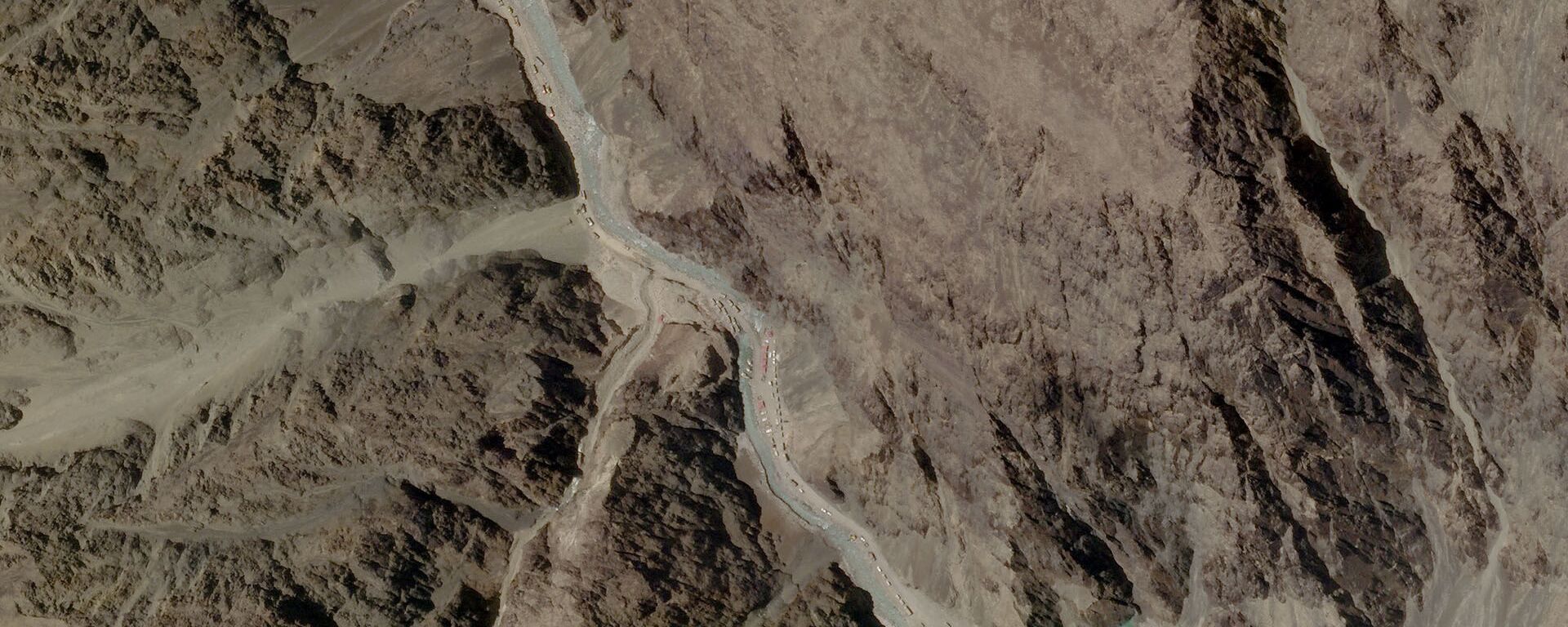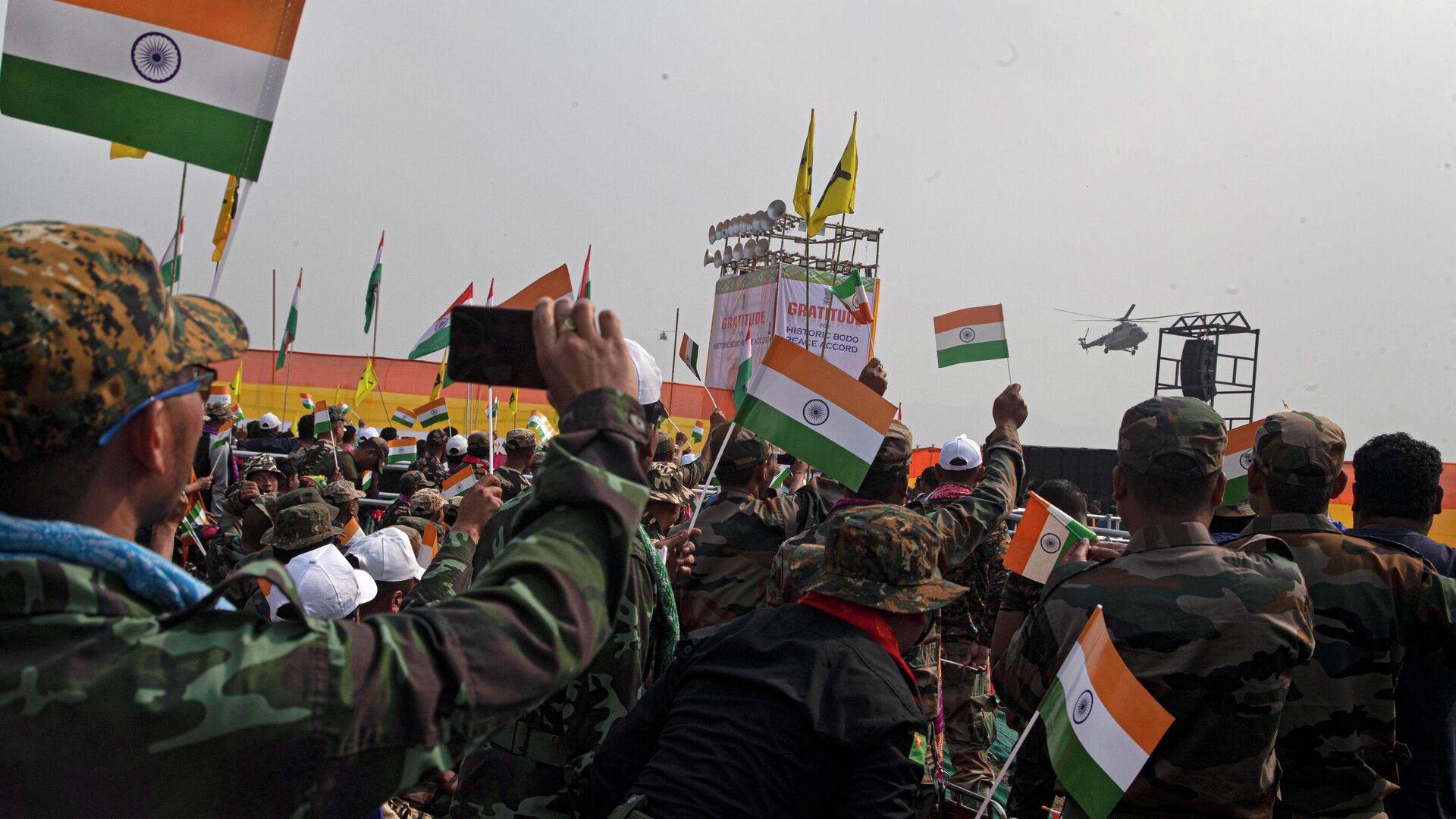https://sputnikglobe.com/20211126/tensions-over-sovereignty-australian-diplomat-backs-india-on-border-dispute-with-china-1091041650.html
‘Tensions Over Sovereignty': Australian Diplomat Backs India on Border Dispute With China
‘Tensions Over Sovereignty': Australian Diplomat Backs India on Border Dispute With China
Sputnik International
India claims that the Ladakh border standoff was triggered by China’s unilateral attempts to alter the status quo at the disputed Line of Actual Control (LAC)... 26.11.2021, Sputnik International
2021-11-26T14:35+0000
2021-11-26T14:35+0000
2022-07-19T10:40+0000
ladakh standoff
china
australia
south china sea
united nations convention on the law of the sea (unclos)
quadrilateral security dialogue (quad)
people's liberation army (pla) navy
https://cdn1.img.sputnikglobe.com/img/07e5/0b/1a/1091045912_0:160:3073:1888_1920x0_80_0_0_f76aebbc0d4d06650c51b0a4cec684ec.jpg
Australia’s deputy high commissioner to India, Ian Biggs, on Friday flagged “rising tensions over sovereignty” in the Himalayas and the South China Sea as a “concerning trend”, arguing that democratic nations such as his and India must “work together” to counter these “challenges to democracy”.Biggs' remarks are viewed as a reference to the ongoing border dispute between the People’s Liberation Army (PLA) and the Indian Army in the eastern Ladakh region of the Himalayan mountains. The border dispute began in May last year and still remains to be fully resolved.Over the last few weeks, Australian Defence Minister Peter Dutton has been particularly hawkish when it comes to facing up to Beijing, saying that it isn’t “inconceivable” for Canberra to join the US in defending Taiwan in case of "invasion" by China. Dutton has also said that his government won’t stand down to China. His statements have attracted criticism from Beijing.Despite its growing criticism of China over the question of Taiwan as well as Beijing’s conflicting maritime claims in the South and East China Seas, Australia has so far been mindful of not taking clear sides in the ongoing Ladakh border standoff.The joint statement after the first ever 2+2 Dialogue between the Australian and Indian foreign and defence ministers in New Delhi in September this year didn’t make a reference to the Ladakh standoff.The joint statement at the end of the maiden dialogue did, however, call for “adherence of all nations to international law including the United Nations Convention on the Law of the Sea (UNCLOS)” in the maritime domain, including in the South China Sea.The joint statement released after the first ever in-person ‘Quad’ Summit at White House in September this year didn’t make any clear-cut reference to the Sino-India border tensions, while making a reference to upholding “territorial integrity” of the states.In an interview with Indian daily The Hindu last year, Australia’s High Commissioner to India Barry O’Farrell stated that Canberra won’t “interfere” in the border dispute between India and China.Immediately after the deadly Galwan Valley clashes in June last year, O’Farrell urged “restraint” from both Beijing and New Delhi, while saying that his government “opposed unilateral attempts” to change the territorial status quo.20 Indian and four Chinese troops were killed during the clashes, the deadliest episode of the ongoing border standoff and also the most fatal encounter between the two countries in over four decades.Australian Prime Minister Scott Morrison in July last year made a reference to the India-China border dispute, while presenting his government’s defence strategic update. However, he used the border standoff just to make a case for the “dangerous” trends in the Asia-Pacific region and argue that Australia should be prepared for such eventualities.
https://sputnikglobe.com/20211114/australia-vows-to-support-us-in-taiwan-in-event-of-confrontation-with-china-1090731296.html
https://sputnikglobe.com/20210219/eight-months-after-clash-with-indian-army-in-galwan-valley-china-admits-its-losses-1082122680.html
ladakh standoff
china
australia
south china sea
Sputnik International
feedback@sputniknews.com
+74956456601
MIA „Rossiya Segodnya“
2021
News
en_EN
Sputnik International
feedback@sputniknews.com
+74956456601
MIA „Rossiya Segodnya“
Sputnik International
feedback@sputniknews.com
+74956456601
MIA „Rossiya Segodnya“
ladakh standoff, china, australia, south china sea, united nations convention on the law of the sea (unclos), quadrilateral security dialogue (quad), people's liberation army (pla) navy
ladakh standoff, china, australia, south china sea, united nations convention on the law of the sea (unclos), quadrilateral security dialogue (quad), people's liberation army (pla) navy
‘Tensions Over Sovereignty': Australian Diplomat Backs India on Border Dispute With China
14:35 GMT 26.11.2021 (Updated: 10:40 GMT 19.07.2022) India claims that the Ladakh border standoff was triggered by China’s unilateral attempts to alter the status quo at the disputed Line of Actual Control (LAC) between the two Asian powerhouses. New Delhi has also said that it stands firm in safeguarding its sovereignty and territorial integrity.
Australia’s deputy high commissioner to India, Ian Biggs, on Friday flagged “rising tensions over sovereignty” in the Himalayas and the South China Sea as a “
concerning trend”, arguing that democratic nations such as his and India must “work together” to counter these “challenges to democracy”.
"The COVID-19 pandemic has accelerated many of the concerning trends we already faced in the Indo-Pacific, indeed globally”, the Australian diplomat said during a virtual address at a think tank to mark India's Constitution Day.
Biggs' remarks are viewed as a reference to the ongoing border dispute between the People’s Liberation Army (PLA) and the Indian Army in the eastern Ladakh region of the Himalayan mountains. The border dispute began in May last year and still remains to be fully resolved.
Over the last few weeks, Australian Defence Minister Peter Dutton has been particularly hawkish when it comes to facing up to
Beijing, saying that it isn’t “inconceivable” for Canberra to join the US in defending Taiwan in case of "invasion" by China. Dutton has also said that his government won’t stand down to China. His statements have attracted criticism from Beijing.

14 November 2021, 18:45 GMT
Despite its growing criticism of China over the question of Taiwan as well as Beijing’s conflicting maritime claims in the South and East China Seas, Australia has so far been mindful of not taking clear sides in the ongoing Ladakh border standoff.
The joint statement after the
first ever 2+2 Dialogue between the Australian and Indian foreign and defence ministers in New Delhi in September this year didn’t make a reference to the Ladakh standoff.
The joint statement at the end of the maiden dialogue did, however, call for “adherence of all nations to international law including the United Nations Convention on the Law of the Sea (UNCLOS)” in the maritime domain, including in the South China Sea.
The
joint statement released after the first ever in-person ‘Quad’ Summit at White House in September this year didn’t make any clear-cut reference to the Sino-India border tensions, while making a reference to upholding “territorial integrity” of the states.
In an interview with Indian daily
The Hindu last year, Australia’s High Commissioner to India Barry O’Farrell stated that Canberra won’t “interfere” in the border dispute between India and China.
“In relation to the border issues…that is a matter for China and India to resolve, not a matter for Australia to interfere with. What we have seen in the past week when others have sought to step in, it has been made clear that India and China will resolve it bilaterally”, the top Australian diplomat in India told the Indian newspaper.
Immediately after the deadly Galwan Valley clashes in June last year, O’Farrell urged “restraint” from both Beijing and New Delhi, while saying that his government “opposed unilateral attempts” to change the territorial status quo.

19 February 2021, 12:49 GMT
20 Indian and four Chinese troops were killed during the clashes, the deadliest episode of the ongoing border standoff and also the most fatal encounter between the two countries in over four decades.
“Clashes between Indian and Chinese troops in the Galwan Valley, and reports of loss of life, are concerning", Australian foreign minister Marise Payne said at the time.
Australian Prime Minister Scott Morrison in July last year made a reference to the India-China border dispute, while presenting his government’s defence strategic update. However, he used the border standoff just to make a case for the “dangerous” trends in the Asia-Pacific region and argue that Australia should be prepared for such eventualities.



